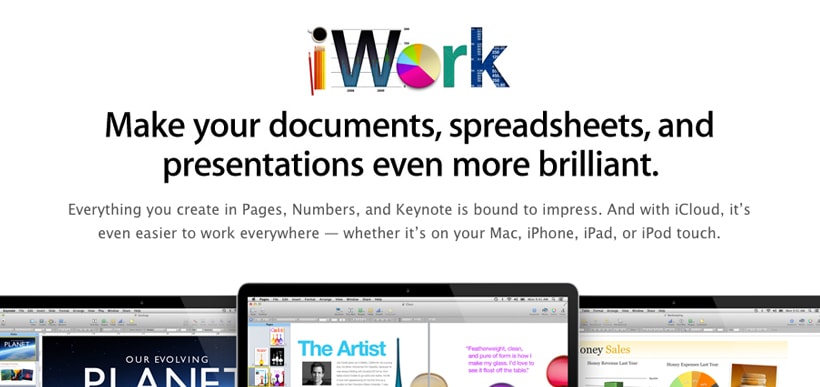At Apple’s recent Worldwide Developer’s Conference, a new version of the iWork productivity suite was previewed, and it included some interesting features. Integrated with the popular iCloud service, the latest incarnation of iWork can be accessed from any device, including a PC, using an Internet browser. To demonstrate just how handy this can be, Roger Rosner of Apple used it to edit a Microsoft Word document on a Windows 8 PC by running iWork in a Google Chrome browser window.
At approximately $60.00 to download the full iWork suite of Pages, Numbers and Keynote from the App Store, the software is a reasonable price compared to purchasing Office for a PC. But if you want the accompanying apps for your iPad or iPhone, they’ll cost you roughly an additional $30.00. Are they worth it, especially considering the option to access iWork from iCloud on any browser will be available this fall?
Depending on the way you work, it may be worthwhile to have iWork on your Mac as well as the apps on your device. The combination is ideal for the mobile mindset many of us have today. The freedom to start a document in Pages on OSX, then access it in iCloud and add to it on iPad during your morning commute or even have the ability to pull it up on your iPhone and show it to someone unexpectedly can prove quite convenient. It’s especially useful if you either don’t have a MacBook or the circumstances just don’t call for pulling a computer out. For example, the ability to pull up and deliver a Keynote presentation on your iPhone or iPad makes for greater ease of mobility than having to set up a laptop.
The app versions of the iWork programs are surprisingly full-featured, too. You’ll enjoy the same capabilities to read and create documents as you’ll get on the traditional Mac software. Pages, Numbers and Keynote are just as visually appealing as they are on OSX and offer many options for formatting and editing, while being tailored to a mobile device. For example, Numbers uses a unique input panel in iOS that makes using it on iPhone or iPad much simpler. Furthermore, Keynote capitalizes on its visually appealing format and increases interaction by offering the ability to touch and swipe to create presentations.
There are two main drawbacks to operating iWork from iOS, but neither should be significant enough to deter consumers from using them. First is the pop-up touchscreen keyboard. While certainly sufficient for making minor additions or edits to documents, most consumers find it less than optimal for doing large amounts of work. If, for example, you’d like to use the iPad to work on the go instead of having a MacBook, a portable wireless keyboard or case and keyboard combination device is highly recommended.
The second concern with iWork for iOS is the inability to have multiple documents open at once. While not a major issue, it may decrease productivity slightly for those who are used to switching back and forth between files while working. Despite these minor negative points, however, iWork for iOS is still incredibly functional. Furthermore, while the upcoming release of iWork for iCloud is useful, it’s not beneficial in moments where you don’t have an Internet connection. As a result, the ability to work in the app and sync later is convenient.
Given that purchasing the equivalent Office for a PC would cost between $95.00 and $150.00 for the average versions, with professional additions and extras upping the price even more, the price of owning iWork for OSX and iOS comes into perspective. Whether you’re jetting between the office, home and meetings or just want to utilize the time during your commute, t o have the option of accessing your documents and being able to work on them from any device can prove extremely valuable.
